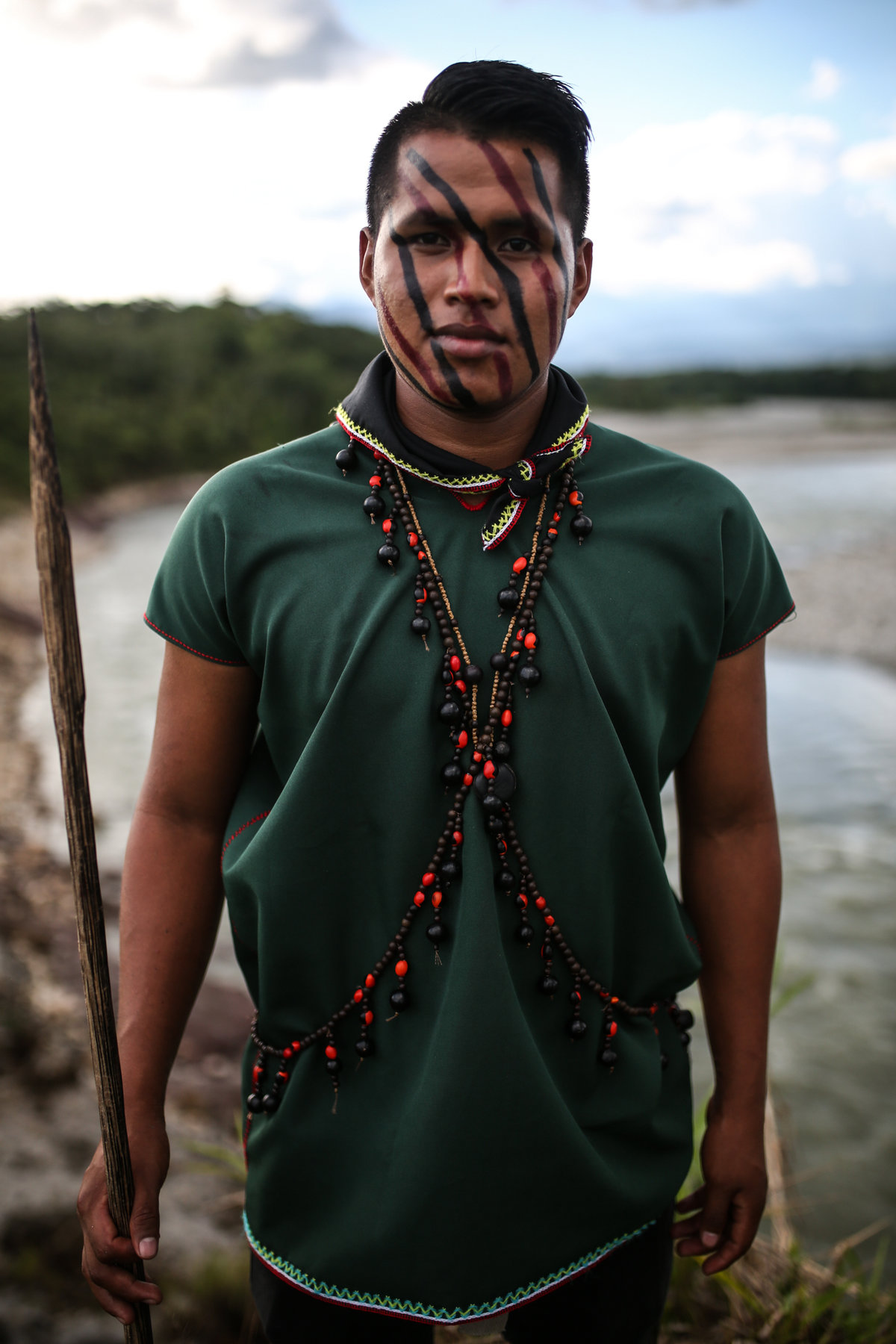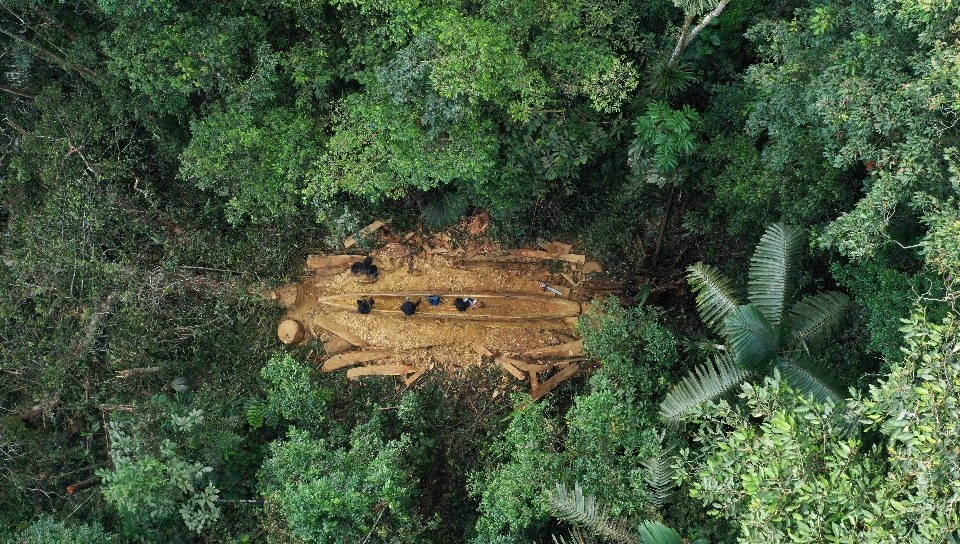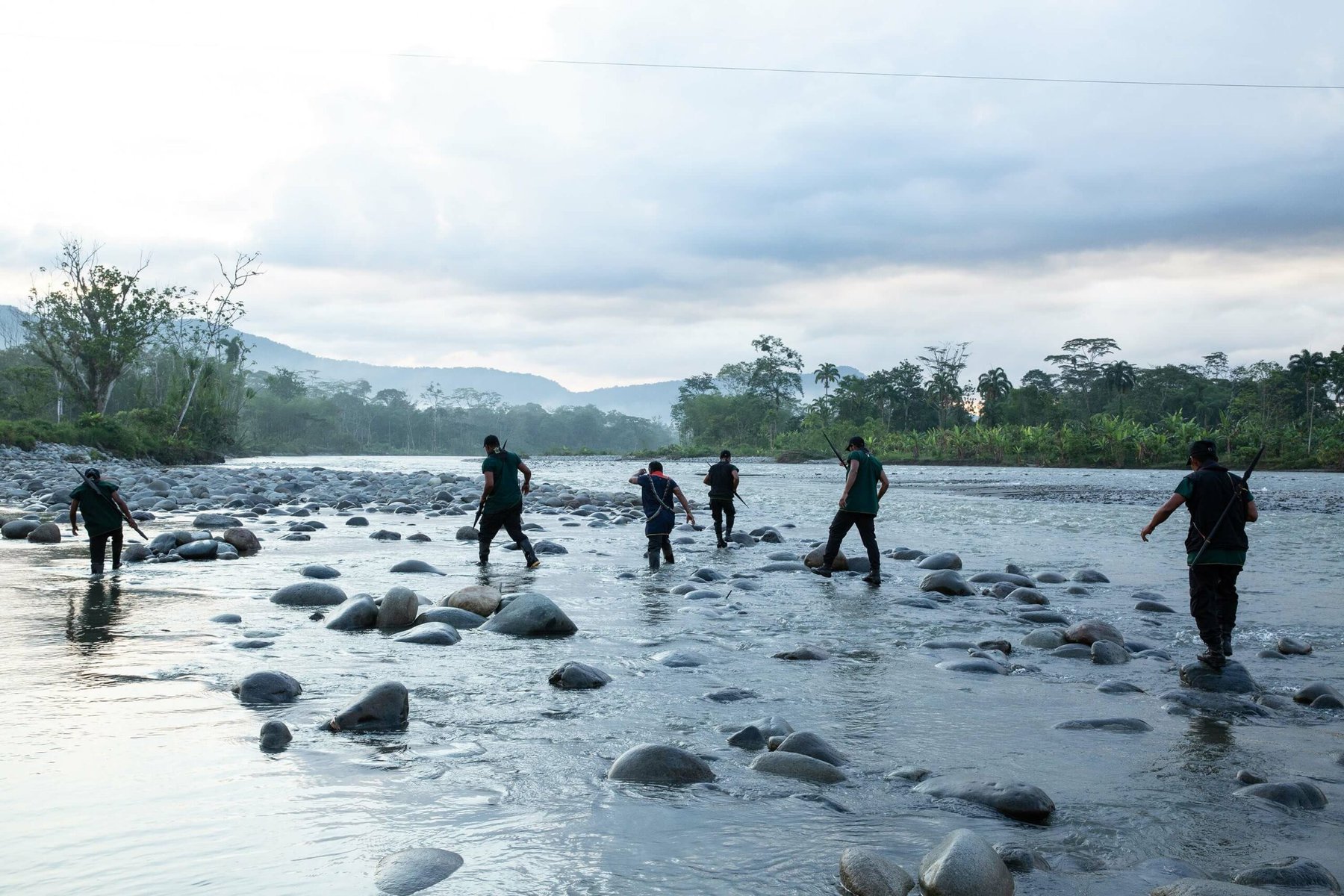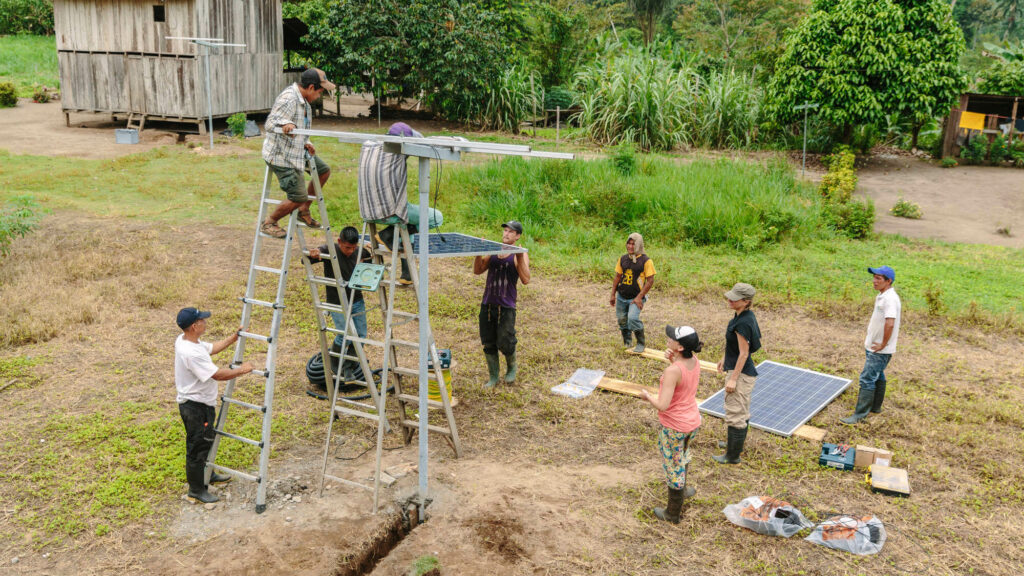Nixon Andy Narváez, a young member of the Indigenous A’i Kofán of Sinangoe community in the heart of the Amazon rainforest, has vivid memories of witnessing the arrival of extractive companies when he was a child.
“They came and contaminated our rivers, which used to be clean and fresh,” Narváez recalls. “Now they are polluted, and there are no longer any fish to catch.”
Growing up, he saw the formation of the A’i Kofán de Sinangoe Indigenous guard. Indigenous guards are groups of mostly young men and women that monitor the Amazon to prevent invasions and illegal activity. Their efforts have been vital in preventing deforestation and curbing pollution. As guardians of the forest, these Indigenous guards are playing a crucial role in the survival of the Amazon’s biodiversity and in protecting the planet.
For Indigenous communities, protecting nature and biodiversity is not only a way of life but also a crucial strategy for combating deforestation and extractive activities, which are major drivers of climate change. Human life, the planet, and the Amazon depend on their tireless efforts. Their ancestral knowledge and close relationship with nature have made them frontline guardians of this vital ecosystem.

As he grew older, Narváez realized that he had a responsibility to protect his community’s territory, and in 2016, he joined the guard. In 2017, the community created its own Law of Control and Protection of the A’i Kofán Ancestral Land of Sinangoe, which aimed to safeguard its land and establish a system of control and surveillance over activities carried out on their land.
That same year, the community underwent a transformative shift with the arrival of technology. With the support of the nongovernmental organization Amazon Frontlines and the Indigenous-led Ceibo Alliance, community members were provided with technological tools including drones, camera traps and georeferencing tools, which they learned to use themselves. Additionally, solar panels were installed so that Indigenous guard members could use this technology in remote areas where they keep vigil during the night.
According to Narváez, this introduction and education on technology was “a game-changer.” These tools proved essential in the community’s ongoing fight against illegal activities such as deforestation and mining. With satellite images from Global Forest Watch and MapBiomas, the guards can now monitor changes to the Amazon rainforest over the last three decades, empowering them to protect their ancestral lands and the environment for future generations.
“Technology helped us uncover that our precious river was being invaded and our rights were being violated. This gave us the means and evidence to act and defend our land for the generations to come,” Narváez says.
Crushed by negative news?
Sign up for the Reasons to be Cheerful newsletter.Responding to growing threats
Over the past three decades, the Amazon has lost over 54.2 million hectares of tropical forest, equivalent to almost nine percent of its surface area. Human pressure has caused 17 percent of the region to be deforested. Studies warn that the Amazon is close to the point of no return: when deforestation reaches 20 to 25 percent, triggering irreversible changes in nature and humanity.
The extractive industry began to commit environmental crimes in the Ecuadorian Amazon in 1972, when Ecuador became an oil exporter and Texaco (now owned by Chevron) began operations there. The EcoCiencia Foundation reveals that between 2001 and 2020, 623,510 hectares in Ecuador were deforested. In addition, illegal activities such as agribusiness, mining and logging continue to damage the Ecuadorian portion of the Amazon rainforest, considered the lung of the planet.
In response to the environmental emergency and threats in the Ecuadorian Amazon, Indigenous communities have resorted to an ancestral practice to protect their ancestral lands: the establishment of Indigenous guards. Today, the A’i Kofán Indigenous guard has 27 young members.
The work of Indigenous guards has not been easy, but they remain committed to their cause. Decades ago, when there was no electricity in several Indigenous communities, including the A’i Kofán territory, the guards had to make exhaustive trips on foot to monitor their territory of over 60,000 hectares and defend it against threats such as illegal hunters, miners and loggers. “I remember hearing that my ancestors had to make endless, exhausting walks,” says Narváez. In addition, the lack of cell phones or cameras made it difficult to gather evidence of illegal activities taking place.

The use of new technological tools has already resulted in significant victories. In 2018, the Indigenous guard of Sinangoe detected excavators alongside the Aguarico River during a drone surveillance operation. The Aguarico River, which flows rapidly, is imposing, and it’s necessary to cross it to move from one community to another. The humid area is covered with thick vegetation, but while operating the drone, a member of the guard noticed that the natural green landscape was interrupted by the presence of backhoes near the river.
Narváez and other members of the guard investigated further. They reviewed official documents and discovered that the Ecuadorian state had violated the right of Indigenous communities to self-determination by granting mining concessions for a duration of 25 years on their territory.
At that moment, Narváez thought of his three-year-old daughter and the bleak future she would face, growing up surrounded by machinery that exploits the land. He remembered his own childhood, running in nature, swimming in the river and fishing. For Indigenous peoples, the earth is a living and spiritual being interconnected with humans. Their motivation to defend their land and environment stems from the fact that it is “their own life,” as Narváez puts it.
He and his partners decided to take a stand against the government for granting large-scale mining concessions without prior consultation, a right recognized by the Constitution and international law. The Sinangoe community won their case, and a provincial court invalidated the mining concessions.
In 2022, Ecuador’s Constitutional Court upheld the ruling, opening up possibilities for other communities whose rights were similarly violated. Now, they can look to this case as a model for how the law can be interpreted in their own cases. Environmental lawyer Pablo Fajardo hailed the decision as “a milestone in the struggle for the self-determination rights of Indigenous peoples and the rights of nature.”

One community that benefited from this precedent is the Siekopai people. Consisting of fewer than 750 people, this community in the western part of the Ecuadorian Amazon is also known as the “people of various colors” because of their vibrant traditional clothing. They live along the banks of the Aguarico River, and their territory is threatened by oil exploitation. With the help of programs such as Global Forest Watch, the Siekopai people have been able to monitor their land from afar — using GPS, camera traps, and drones — and note any evidence of deforestation, illegal crops or invasions.
According to Donald Moncayo, president of Unión de Afectados por Texaco (UDAPT), an organization that defends Amazonian communities affected by oil contamination, “technological monitoring has become a before-and-after for Siekopai and environmental activists to detect violations.” He also highlights the importance of cell phones and social media in reporting pollution in the Ecuadorian Amazon, where an average of 13 oil spills occur per month.
Though technology has made a valuable difference for Indigenous guard units in protecting biodiversity, the fight remains difficult. The communities lack economic resources, and the government intends to continue oil development, despite studies indicating that Ecuador’s oil reserves could run out in the 2030s.
But as Nicolas Mainville, Amazon Frontlines’ environmental monitoring expert points out, “While technological tools have been helpful, the real defenders of the environment are the Indigenous communities themselves.”
Narváez feels the same way, and is determined to continue defending his community’s territory and the environment. He is now focused on passing on these technological tools to other communities.
He also hopes that future generations will continue the fight. When it comes to Narváez’s own family, that hope may well be realized: His daughter, inspired by his leadership, intends to follow in his footsteps and become a guardian of the forest, too.









